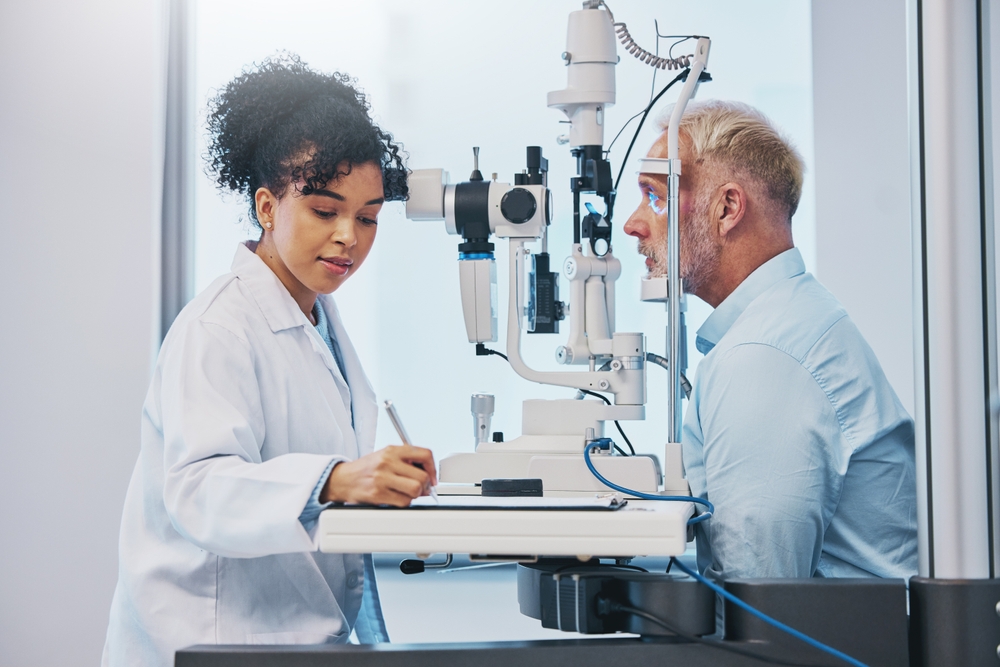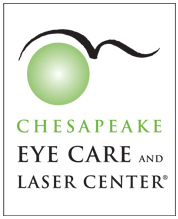How Do Eye Doctors Diagnose Diabetic Retinopathy?
December 20, 2023
If you are a person living with diabetes, you may have worried about the possibility of developing diabetic retinopathy. Diabetic retinopathy is one of the most commonly diagnosed complications of diabetes, affecting the eyesight of approximately 1 in 3 diabetic adults over the age of 40.
Keep reading to learn how eye doctors diagnose diabetic retinopathy!
What is Diabetic Retinopathy?
Diabetic retinopathy is a potentially serious eye condition that affects people with diabetes. It occurs when high levels of blood sugar, known as glucose, damage the blood vessels in the retina, the light-sensitive tissue at the back of the eye. The retina is essential for vision, as it sends visual information to the brain, allowing you to see. 
Diabetic retinopathy develops in two stages:
Non-Proliferative Diabetic Retinopathy (NPDR)
This is the early stage of diabetic retinopathy. In NPDR, the blood vessels in the retina weaken and develop small bulges called microaneurysms.
These weakened blood vessels can leak fluid into the retina, causing swelling and creating pressure. Increased pressure in the retina can cause the macula, the part of the eye that processes central vision, to swell, a condition called macular edema.
Proliferative Diabetic Retinopathy (PDR)
PDR is the more advanced and severe stage of diabetic retinopathy. In the PDR stage, the blood vessels in the retina become so damaged that they begin to close off.
In response, the eye attempts to grow new blood vessels, a process called neovascularization. These new blood vessels are often abnormally thin and can bleed into the vitreous, which is the clear substance that fills up the area in the eye between the lens and the retina.
Scar tissue caused by the creation of new blood vessels can also damage the macula or cause the retina to detach. At the PDR stage, a person’s central and peripheral vision can be severely impaired and if left untreated, lead to permanent vision loss.
Do you have diabetes?
Schedule an appointment today to have a diabetic eye exam!
What are the Symptoms of Diabetic Retinopathy?
 Because diabetic retinopathy develops slowly and is usually painless, people may not notice symptoms in the early stages of the condition. As diabetic retinopathy progresses, the symptoms become more noticeable and vision begins to be impaired.
Because diabetic retinopathy develops slowly and is usually painless, people may not notice symptoms in the early stages of the condition. As diabetic retinopathy progresses, the symptoms become more noticeable and vision begins to be impaired.
In the NDPR stage, the most common symptoms are:
- Blurred or distorted vision
- Floaters in the central field of vision
- Difficulty seeing in low light or night blindness
- Changes in color perception (colors may appear faded)
- Near vision impairment
As diabetic retinopathy progresses to the PDR stage, the symptoms of NPDR may worsen and more severe symptoms may develop, including:
- A noticeable increase in the amount of floaters seen in the central field of vision
- Tunnel vision
- More instances of minor vision impairment or disturbance
- The sudden onset of incidences of serious vision impairment
- Complete loss of central vision
How Do Eye Doctors Test for Diabetic Retinopathy?
The routine tests performed at a comprehensive eye exam are often the first step in testing for diabetic retinopathy. If your eye doctor detects signs of diabetic retinopathy during a routine exam, you may be sent for more advanced testing.
The routine tests performed at a comprehensive eye exam that can reveal signs of diabetic retinopathy include:
Review of Your Medical History
Your eye doctor will review any changes to your medical history that may have occurred since your last visit. Knowing you have a chronic health condition, like diabetes, alerts your eye doctor to be on the lookout for signs of eye problems associated with that condition.
Visual Acuity Testing
Visual acuity tests, in which you read an eye chart, assess the quality and clarity of your central vision. If you are in the early stage of diabetic retinopathy, you may struggle with near or distant vision.
Dilated Eye Exam
A dilated eye exam is the most crucial diagnostic tool for diagnosing diabetic retinopathy. During this exam, your eye doctor administers special eye drops to enlarge the pupil, allowing for a better view of the structures of the eye, including the retina and associated blood vessels, the macula and the optic nerve.
Tonometry Test
This test measures eye pressure by blowing a small burst of air directly onto the surface of your eye. Elevated pressure within the eye may be a sign of diabetic retinopathy, as well as glaucoma, another eye condition that is more prevalent in people with diabetes.
If you are diabetic and a routine eye exam uncovers the signs and symptoms of diabetic retinopathy, you might be sent for more advanced testing. These tests include:
Optical Coherence Tomography (OCT)
OCT is a non-invasive imaging technique that provides cross-sectional images of the retina. It can help assess the thickness and integrity of retinal layers, allowing your eye doctor to detect any swelling or fluid accumulation.
Fundus Photography
Fundus photography involves taking high-resolution photographs of the retina. These images provide a detailed view of the blood vessels and structures in the retina, allowing your eye doctor to track changes within your eye over time.
Fluorescein Angiography
A fluorescein angiogram is a test that involves injecting a harmless fluorescent dye into a vein in your arm. The dye then circulates through the blood vessels in the retina and a special camera takes a series of images used to assess blood flow and identify any abnormalities.
Do you have diabetes?
Schedule an appointment today to have a diabetic eye exam!
How is Diabetic Retinopathy Treated?
Damage to the eye caused by diabetic retinopathy cannot be reversed, so the goal of treatment is the prevention of further damage to the eye. Treatment options often depend on what stage the condition has reached.
If found in the earliest stage, you may be advised to more carefully control your blood sugar levels and blood pressure. Better diabetes management can stop the condition from worsening.
If diabetic retinopathy is diagnosed in the later stage, you may be prescribed medications to reduce swelling or prevent the growth of new blood vessels. Laser surgery can also be used to shrink or seal off leaking blood vessels as well as to reduce swelling in the retina.
If you have diabetes, there are steps you can take to minimize the potential vision loss caused by diabetic retinopathy. One of the most important steps is scheduling annual comprehensive eye exams to prevent diabetic retinopathy from affecting the quality and clarity of your eyesight.
Do you have diabetes? Schedule an appointment at Chesapeake Eye Center in Annapolis or Easton, MD, today, to make sure you are not at risk for diabetic retinopathy.



